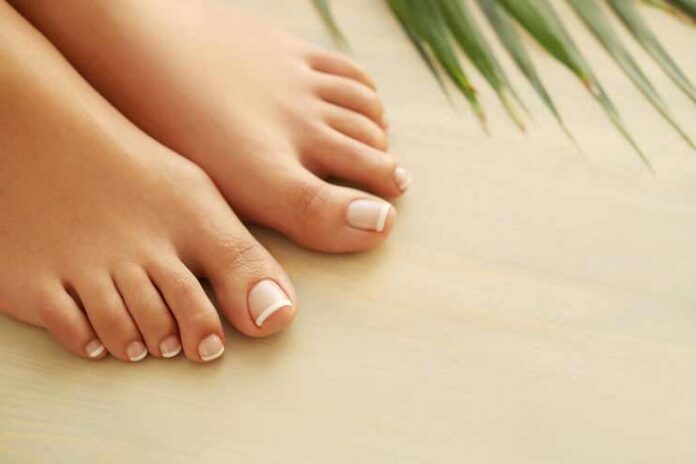Affiliate Disclaimer
Some links in this article are affiliate links. We may earn a small commission if you make a purchase through these links, at no extra cost to you. We only recommend products we find useful to our readersHow often have you stabbed that little pinky toe against the door or the side of the bed?
What if you feel a similar kind of pain in your toenails without even stabbing it?
The intensity of pain is almost similar in the case of an ingrown toenail. This kind of condition is not just painful but dangerous, too, because it may lead to an infection if left untreated.
This is the primary reason why ingrown toenail removal is a necessity.
What is An Ingrown Toenail and Its Stages?
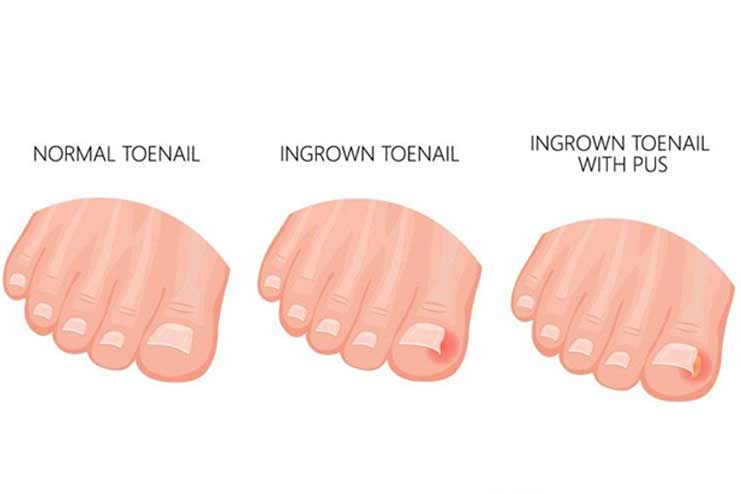
An ingrown toenail is a condition in which the edges of your nails on your feet tend to grow into the skin beside the nail itself.
Ingrown toenails can easily be treated at home, but intensive care is needed when the condition worsens and signs of infection start to show.
If you are pondering how to detect if the ingrown toenail is infected, its appearance will easily give it away.
An infected ingrown toenail is usually filled with pus, which tends to ooze out along with blood and tissues. The pain is unbearable at times, which is yet another significant symptom that your ingrown toenail is in its last stage and needs immediate medical attention.
In medical terms, an ingrown toenail has three distinct stages (R):
- The first stage of an ingrown toenail is signified by inflammation around the toe along with redness and initial accumulation of fluid around the nail.
- The second stage is significant for an infected ingrown toenail and is characterized by heightened pain around the toenail along with the discharge of the accumulated pus and fluid, which results in the spread of the bacteria.
- The final stage of an ingrown toenail is when the hypertrophic tissue starts to develop around the infected ingrown toenail, primarily due to neglecting the situation rather than seeking medical attention.
Diagnosis of an ingrown toenail is mainly done via physical examination. Even at home, if you feel like your toenail is digging into the skin around the perimeter of it, there are chances that you are suffering from an ingrown toenail and it needs immediate treatment to relieve the symptoms, especially the pain and possible infection.
The doctor might perform an x-ray to diagnose the severity of the situation and how far the toenail has dug into the skin. The x-ray also helps understand the cause of the problem, whether it was caused by an accident or naturally.
What Causes an Ingrown Toenail?
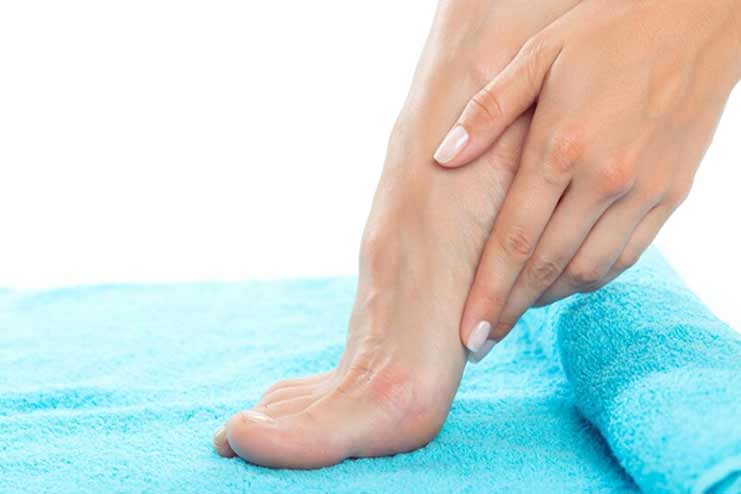
Ingrown toenails can affect any individual – both men and women. Studies suggest that people with sweaty feet are mostly at risk of an ingrown toenail. Aging is another common cause of ingrown toenails because toenails become thicker with age.
Some other common causes of an ingrown toenail include:
- Irregular cutting of toenails, primarily cutting them in rounded shapes
- Tight footwear that imposes pressure on the toenails
- Stabbing your toenail against a solid object
- A sudden injury to the toenails
- Lack of proper foot hygiene
What are the Symptoms of Ingrown Toenails?
The symptoms of ingrown toenails are primarily characterized by the stages involved. While the symptoms in the early stages might be preliminary and not that severe, they can cause havoc if left untreated.
Early-stage symptoms:
- Slight inflammation around the toenail
- Tenderness around the affected area
- Accumulation of fluid
Advanced-stage symptoms (infection):
- Red and inflamed skin
- Extreme pain when the toenail is pressed
- Occasional bleeding
- Pus formation and oozing as well
- Overgrowth of skin around the area
How to Treat An Ingrown Toenail?
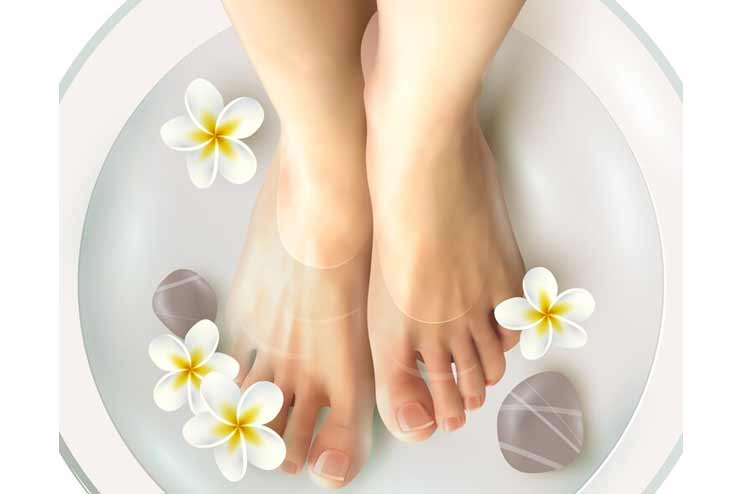
Ingrown toenails are often hard to treat at home, which is why it is best to consult a doctor. But, if the situation is not severe and the toenail is not infected, you may be able to remove an ingrown toenail yourself.
If you are looking for easy ways to fix an ingrown toenail permanently, you have stumbled across the correct place.
- Cut your nails properly and uniformly, making sure that there are no crooked ends
- Clean your toenails regularly to get rid of the accumulated dirt in the nooks and crevices of the toenail
- Soak your feet in warm water to help relieve the pain of an ingrown toenail. This also helps with the accumulated pus or fluid in the infected area
- Use medicated powder to help kill the bacterial infestation in the infected ingrown toenail
- Consult a professional for the treatment of ingrown toenail infection
How to Cut an Ingrown Toenail?
To prevent the recurrence of an ingrown toenail, it is necessary to trim your nails properly and precisely. Cutting ingrown toenails can sometimes be a bit of a challenge, so it is always best to follow strict guidelines for a painless trim around the affected ingrown toenails.
Step 1: Soak your feet in a tub of warm water and Epsom salt to help soften the skin around the toenail and the skin it has dug into. It helps relieve the pressure around the nail and allows you to cut it easily.
Step 2: Trim the toenail, ensuring it is cut in a straight line and not rounded because that tends to dig into the skin easily. Next, use any nail tool to remove the accumulated dirt and dead skin cells in and around the toenail and cleanse the area.
Step 3: Get a small piece of cotton and use some tweezers to place it under the area of the toenail that has been ingrown. Don’t overdo it, but gently push the cotton in. This will create a safe distance between the nail and the skin and prevent it from digging into the skin again.
Step 4: Apply some cream or moisturizer to keep the skin around the toenail soft and also to help alleviate the pain that accompanies the ingrown toenail removal.
Home Remedies for Ingrown Toenail
Home remedies are a great alternative if you are looking for natural ways to treat an ingrown toenail. They have little to no side effects and help heal the infected toenail and bring it back to normal.
If you suffer from diabetes or any disease that restricts the normal blood circulation, it is necessary to pay extra attention to ingrown toenail removal and consult a specialist.
1. Rubbing Alcohol
Rubbing alcohol is an amazing remedy to remove an ingrown toenail yourself. It helps soften the hardened skin around the toenail and sterilizes the infection, which is the sole reason behind the pain in the area.
- Pour some alcohol onto a cotton ball and dab that over the ingrown toenail.
- Repeat this process multiple times throughout the day.
Once you feel like the skin around the toenail has softened quite a bit, file the toenail carefully and get rid of the excess that has grown into the skin.
2. Aloe Vera
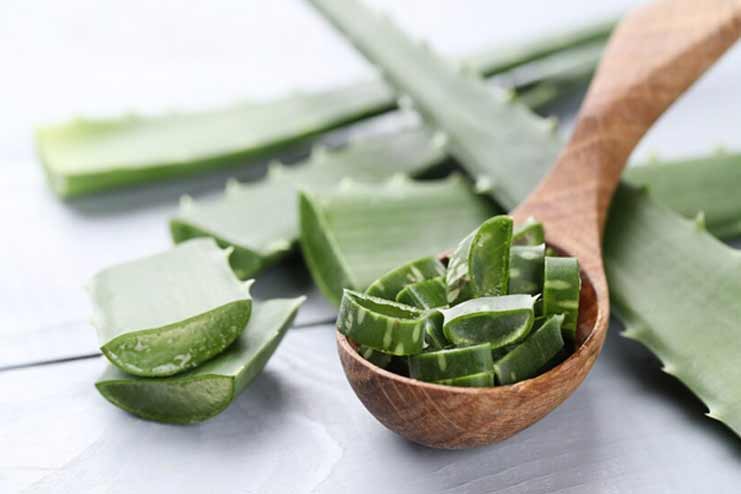
Aloe Vera is loaded with antiseptic, anti-inflammatory, and anti-bacterial properties, making it one of the best remedies to get rid of an ingrown toenail. The slight hydrating and moisturizing properties of aloe vera help soften the toenail, which makes it easier for the ingrown toenail home removal.
- Apply a generous amount of aloe vera gel over the infected ingrown toenail and secure it with a bandage if needed.
- Do this thrice or four times a day for better results
Not only does it heal, but aloe vera also helps ensure the toenail grows in the correct direction.
3. Apple Cider Vinegar Wash
Apple cider vinegar is impactful in treating ingrown toenails because of its anti-bacterial, anti-oxidant, and pain-relieving properties. This helps fight the bacterial growth in the infected ingrown toenail and provides simultaneous pain relief for ingrown toenails as well.
- Fill a basin with warm water to soak your feet
- Add half a cup of apple cider vinegar
- Soak your feet for 15-20 minutes
- File away the dirt and dead skin cells from around the toenail using a filer
- Wash it off and pat dry your feet with a towel
4. Vapor Rub
If you have only been using vapor rub for its conventional uses, it is time to step back and think again. Vapor rub has several alternative uses, one being the treatment for ingrown toenails. The menthol helps relieve the pain around the pain toenail and provides some relief and a soothing feeling.
The vapor rub also helps soften and moisturize the skin which helps you cut out the ingrown toenail with ease.
- Apply a generous amount of vapor rub on your toenail and let it soak into the skin.
- Repeat this process twice or thrice a day
5. Dental Floss

If you are looking for effective ways to promote the growth of toenails over the skin’s edge and not into them, dental floss is an amazing way to do so. It helps prevent the toenail from digging further into the skin.
The dental floss helps obstruct the further growth of the nail into the skin, thereby ensuring easy ingrown toenail removal.
- Soak your feet in warm water to soften the skin in and around the toenail
- Put a fresh piece of waxed dental floss under the ingrown edge of the toenail
- Repeat this process multiple times a day and be sure to use fresh floss every time
6. Coconut Oil
Coconut is loaded with beneficial medicinal acidic compounds like lauric and caprylic acid. Not just that, the presence of medium-chain fatty acids helps moisturize the skin around the toenail.
It is the anti-inflammatory, analgesic, and anti-bacterial properties of coconut oil that help in the treatment of an ingrown toenail.
- Take a good amount of coconut oil on your fingertips and apply it over and around the ingrown toenail
- Repeat this process twice a day
7. Baking Soda
Baking soda is one of the best natural ways to treat an ingrown toenail. It is loaded with excellent antiseptic and anti-inflammatory properties, which help not just relieve the pain of the ingrown toenail but also aid in curing it altogether.
The anti-bacterial and anti-fungal properties of baking soda help prevent the growth of bacteria or fungus in the infected part of the ingrown toenail.
- Mix two tablespoons of baking soda with one tablespoon of water to make a thick paste
- Apply this over the affected toenail and cover it with a bandage
- Leave it on for a few hours and wash it off completely
- Repeat this process twice daily
8. Epsom Salt
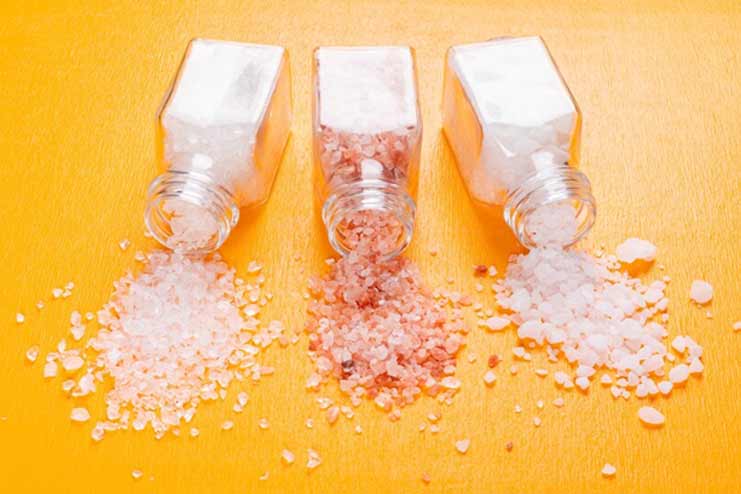
Yet another amazing way to remove an ingrown toenail is with an Epsom salt soak. This helps draw out the pain from around the toenail and also helps fight the growth of bacteria or fungi that could cause infection.
The high magnesium content in Epsom salt helps relieve the inflammation around the area of the toenail and helps avoid the possibility of infection.
- Fill a basin with water and block the drain
- Add two to three tablespoons of Epsom salt to the water and mix it thoroughly
- Soak your feet in that for 15-20 minutes
9. Garlic
Garlic is loaded with anti-bacterial and antiseptic properties that come in handy when treating an ingrown toenail. It helps prevent further spreading of the infection.
The allicin in garlic helps alleviate pain, treats inflammation effectively, and helps to eliminate bacterial growth.
- Crush a few cloves of garlic into a fine paste
- Apply this over the ingrown toenail and cover it with a bandage
- Leave it overnight and repeat this process every day before going to sleep
10. Ginger
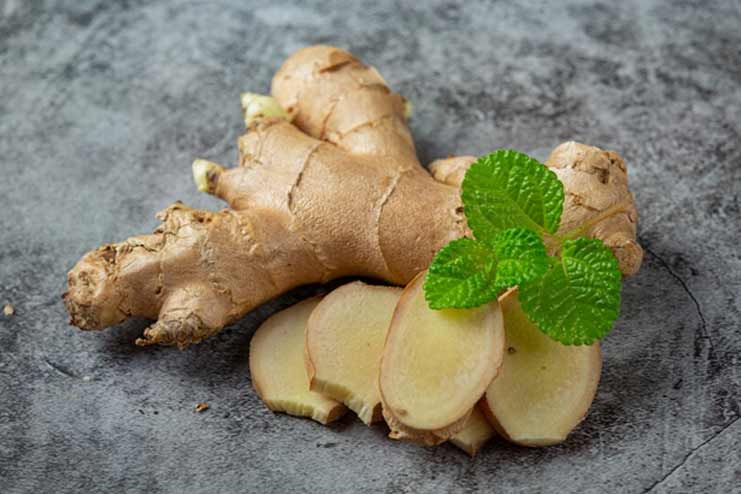
Ginger is an amazing remedy for the treatment of ingrown toenails. It is loaded with antimicrobial and anti-inflammatory properties which promote the process of ingrown toenail removal with flair and ease. It is best to use this as a remedy along with cayenne pepper and sesame oil.
The sesame oil helps moisturize the skin, while the antioxidant and anti-inflammatory properties of cayenne and ginger help in providing pain relief for an ingrown toenail.
- Crush a small piece of ginger into a paste
- Add a few drops of sesame oil and a sprinkle of cayenne pepper and mix well
- Apply this over the toenail, cover it with gauze, and leave it on for 10-15 minutes
- Wash it off thoroughly to ensure that there are no remnants of ginger or cayenne pepper in the toenail
11. Turmeric
Turmeric is an age-old remedy for treating several health issues. The amazing anti-inflammatory and antiseptic properties help prevent the growth of bacteria or any other microbes in the infected area of the ingrown nail.
It is believed that the presence of the compound Curcumin in turmeric provides anti-inflammatory and anti-bacterial properties, which is what helps get rid of an ingrown toenail.
- Take two tablespoons of turmeric powder and mix it with one tablespoon of water to make a thick and smooth paste
- Apply this over the ingrown toenail, cover it with gauze, and leave it on for 1-2 hours
- Wash it off under running water and pat dry
- Repeat this two to three times a day for effective results
12. Lemon
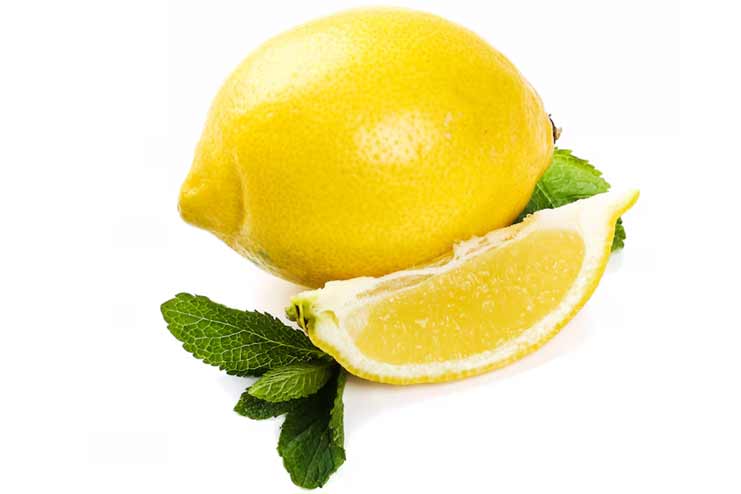
The condition of an ingrown toenail degrades when the normal growth of the toenail is disrupted, and it gets infected because of bacterial and viral infestation. Lemon helps react to and fight both problems.
Lemon juice is acidic, which helps prohibit the excess growth of bacteria. Not just that, it is also imbibed with mild anti-fungal properties, which help fight fungal growth around the ingrown toenail.
- Extract the juice of one lemon
- Dip a piece of cotton in it, dab it all over the ingrown toenail, and cover it with a bandage or gauze
- Leave it overnight and wash away the next morning
- Repeat this once a day till the symptoms completely fade away
13. Onions
Onions are one of the most sought-after natural ways to treat an ingrown toenail because of their amazing properties. They are rich in antibacterial and antifungal properties, which prevent an ingrown toenail from getting further infected.
Onions have allicin, which is said to have antifungal properties that help avoid any kind of fungal growth in the ingrown toenail. The antibacterial and anti-inflammatory properties also play a crucial role in fixing an ingrown toenail.
- Peel an onion and cut a piece from it
- Gently rub it over the ingrown nail and cover the area with a bandage
- Leave it overnight and repeat the process daily once before bed
14. Hydrogen Peroxide
If you weren’t aware before, hydrogen peroxide is treated as a natural disinfectant for the treatment of wounds and cuts. This antiseptic property is exactly what comes in handy in the treatment of ingrown toenail infection. It prevents the spread of the infection and arrests it, which helps cure the issues gradually.
The antibacterial and antifungal properties of hydrogen peroxide help treat the infected ingrown toenail. It also softens the area around the toenail, which further aids in getting rid of the accumulated dirt and dead skin around the area.
- Fill a bucket halfway with warm water
- Add half a cup of 3% hydrogen peroxide to the water
- Soak your feet in it for 15-20 minutes
- Repeat this twice or thrice every day
15. Listerine

Listerine mouthwash is jam-packed with several properties that play a significant role in ingrown toenail removal. It is enriched with excellent anti-bacterial and anti-fungal properties, as well as menthol and eucalyptol, which have proven soothing effects on ingrown toenails.
Listerine helps keep the toenail clean and devoid of any microbial infestations, making it one of the best natural ways to treat an ingrown toenail.
- Mix equal quantities of Listerine and water in a bowl
- Dip a cotton ball into it and rub it over the ingrown toenail with gentle strokes
- Repeat this process twice or thrice daily
16. Essential Oils
Essential oils are another fantastic remedy for treating ingrown toenails that works wonders. They are rich in anti-bacterial and anti-inflammatory properties which help to ensure the prevention of further spreading of the infection-inducing bacteria or fungi.
These essential oils also provide pain relief for an ingrown toenail. If you have been searching for an effective remedy to fix an ingrown toenail permanently, essential oils are the way to go. It helps to rejuvenate the dead skin cells in the area surrounding the toenail while ensuring it is also moisturized.
Some of the most commonly used essential oils for ingrown toenails include:
- Tea tree oil
- Lavender oil
- Peppermint oil
- Oregano oil
How to Prevent an Ingrown Toenail?
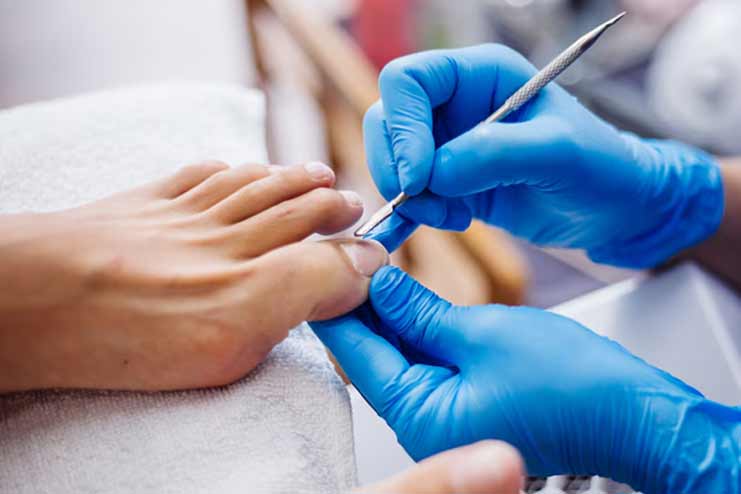
Now that we have also covered all the important and necessary points regarding the ingrown toenail, let us focus on the methods of prevention that can ensure that the painful situation of ingrown toenail removal doesn’t even arise in the first place.
Some of the common ways of preventing ingrown toenails include:
- Always trim the toenails straight and not curved
- Maintain healthy foot hygiene
- Get a pedicure done every month or every two weeks
- Wear correctly fitted shoes. Try not to wear high heels or tight shoes. They may cause high pressure as well as a delay in healing the affected area. You can use sandals instead, which allow the nails to grow properly without causing any problems.
- If your toenails are generally thick and curved, it is best to consult a physician to get the problem checked
When to See A Doctor for an Ingrown Toenail?
Ingrown toenails can quickly be healed with common preventive methods and home remedies if diagnosed in the preliminary stages.
Normally, an ingrown toenail can take about two weeks to a month to completely heal. The healing and recovery process depends on the kind of remedy administered and the stage at which the ingrown toenail has been diagnosed.
If you are in extreme pain, or an ingrown toenail is accompanied by the loss of blood and oozing of pus and fluid, you need to consult a doctor.
Conclusion
Ingrown toenails are painful and troublesome, but there are effective home remedies that alleviate discomfort and promote healing without the need for invasive procedures. The remedies outlined in this article provide various natural approaches, from using common household items like rubbing alcohol and apple cider vinegar to the healing properties of aloe vera, garlic, and turmeric. Each type has different benefits; it may help combat inflammation, remove infections, or soften the skin around so that the nail grows more effortlessly.
These treatments might be efficient for minor cases, but what matters is that one identifies when professional medical attention is necessary. One should not forget signs of infection or ignore extreme pain and discomfort.
Therefore, maintaining proper foot hygiene and early intervention is at the heart of any long-term plan to prevent and treat ingrown toenails. Proper care and precautions will make your feet comfortable again, and further occurrences will be minimal.
-
June 2018Written by Somapika D
-
Nov 2024Edited by Lakshmi Gayatri
In this Article













